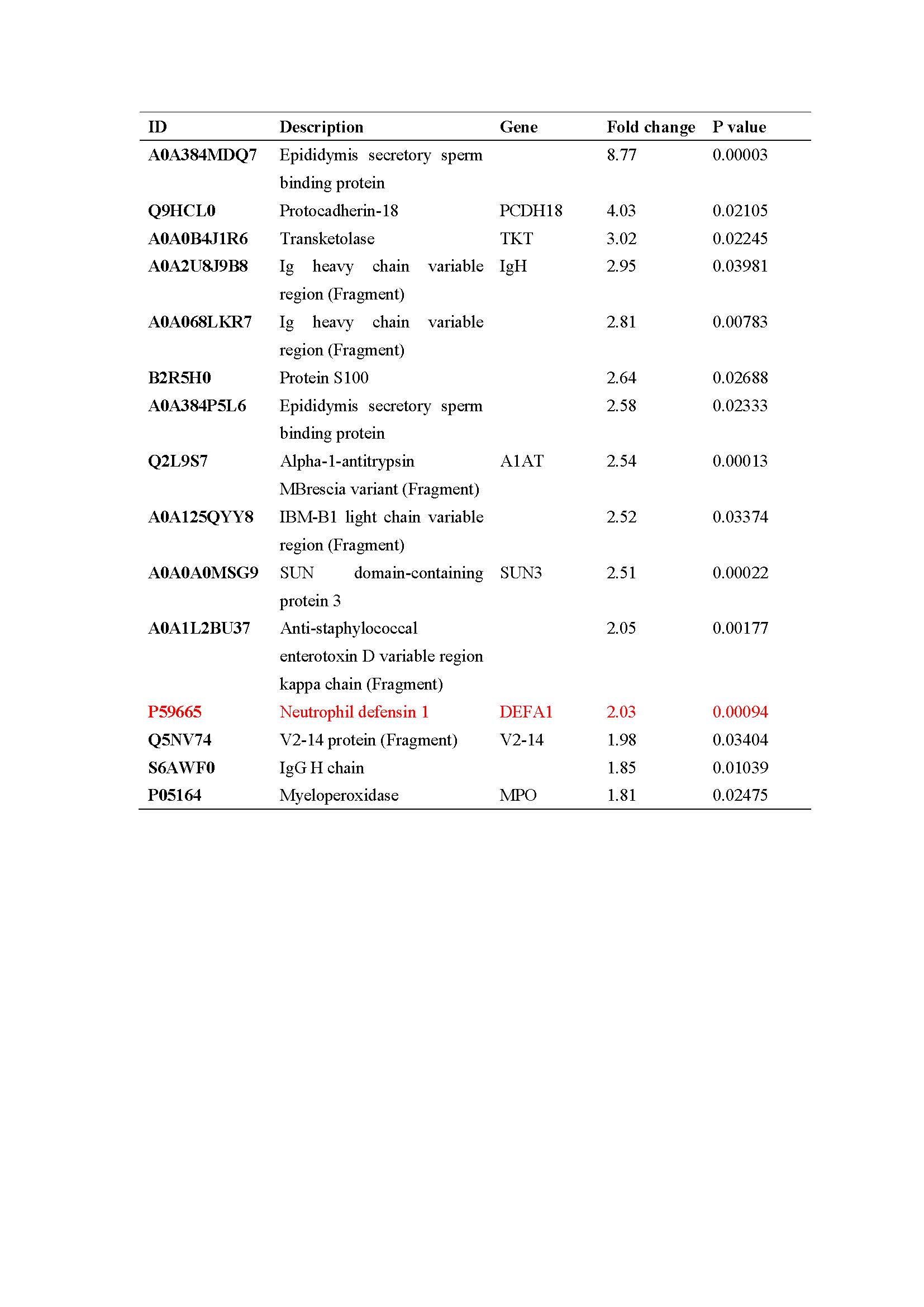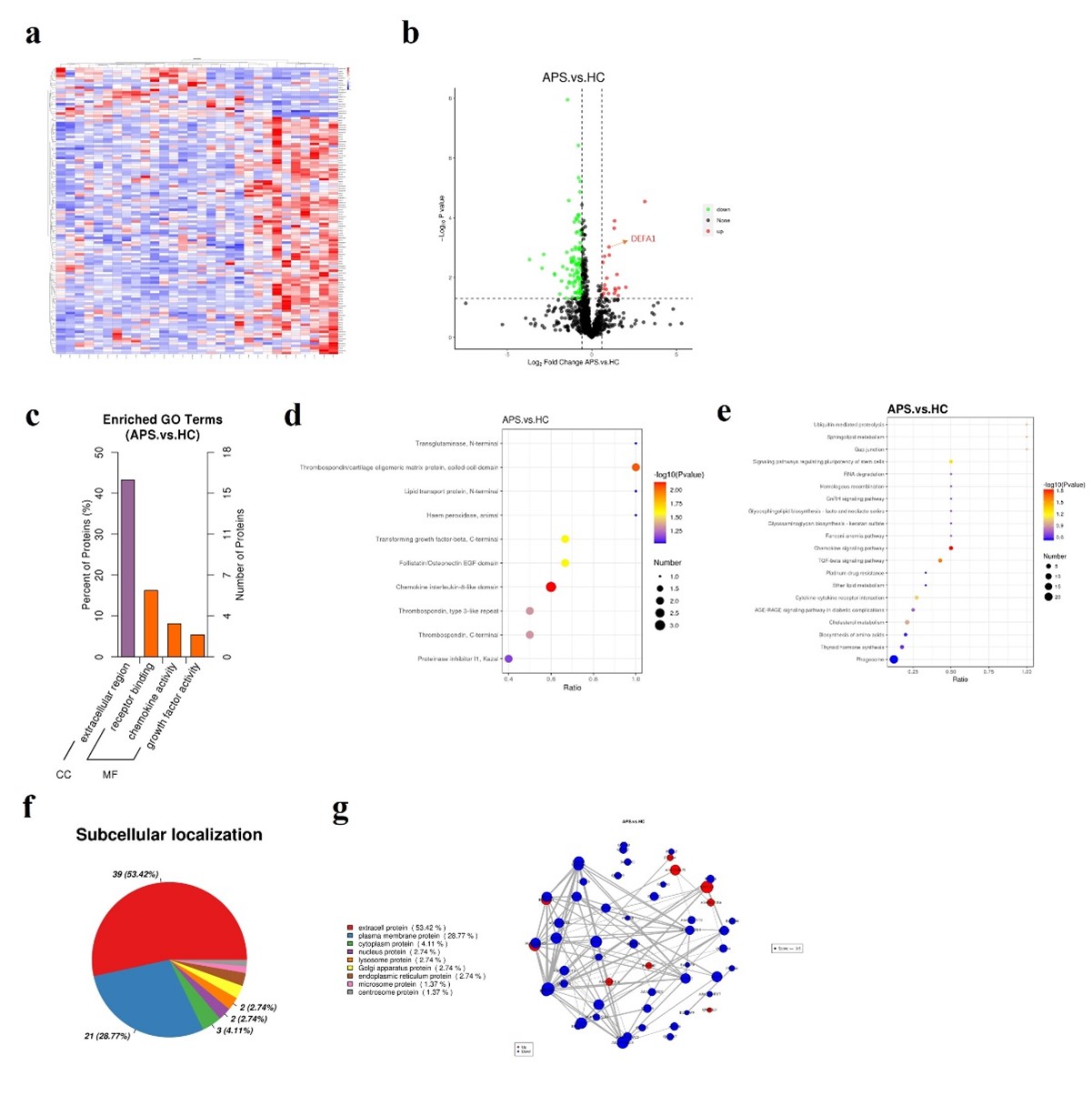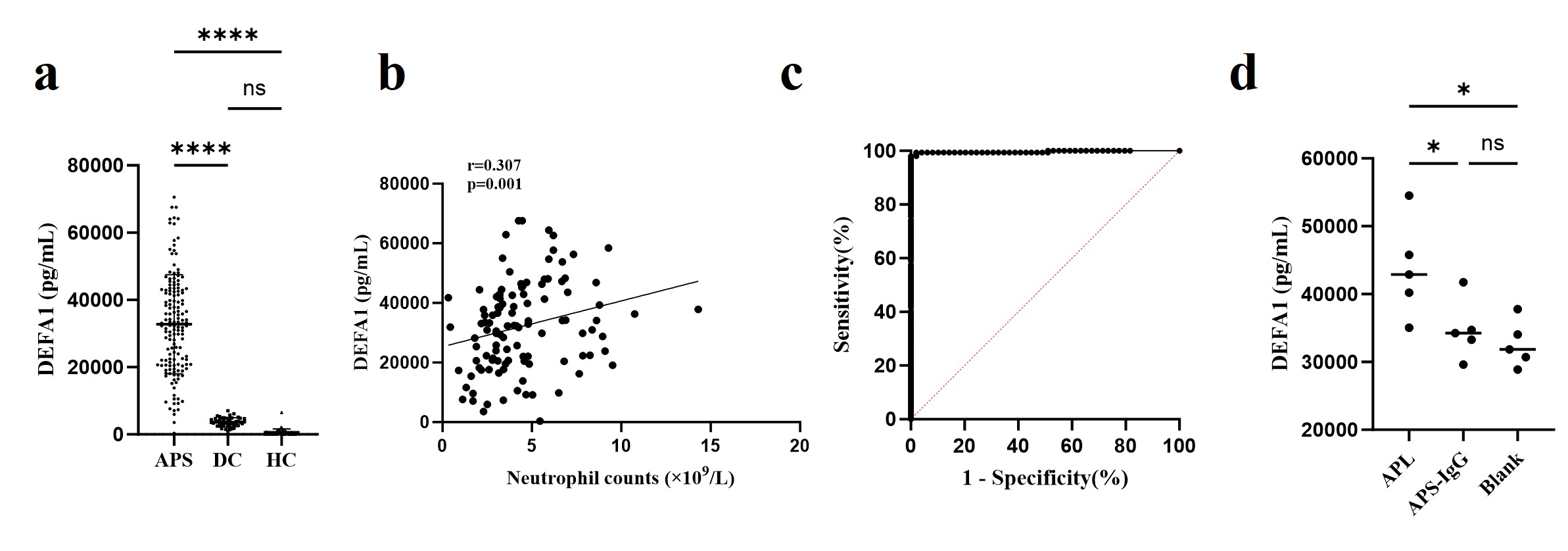Session Information
Session Type: Poster Session A
Session Time: 10:30AM-12:30PM
Background/Purpose: Antiphospholipid syndrome (APS) is a distinct type of thrombophilia caused by autoantibodies, characterized by repeated thrombosis and complications during pregnancy. This study aimed to identify potential proteomic biomarkers for APS and explore their roles in the process of APS.
Methods: Data-independent acquisition (DIA) proteomic analysis was performed on sera from 20 patients with APS and 10 healthy people. For further validation, sera from 151 APS patients, 51 disease controls (16 rheumatoid arthritis, 16 systemic sclerosis, and 18 systemic lupus erythematosus) and 50 healthy controls were collected and their levels of neutrophil defensin 1 (DEFA1) measured using ELISA. ROC was used to evaluate the diagnostic performance of DEFA1. To determine whether antiphospholipid antibodies (aPLs) contribute to the ability of APS sera to promote DEFA1 release, we scored DEFA1 in the supernatant using ELISA after incubating neutrophils from 5 healthy people with purified monoclonal aPL (25 ug/ml) or IgG (25 ug/ml) isolated from patients with APS, with PBS as blank control.
Results: Taking fold change (FC) ≥ 1.5 or ≤ 0.66 and p value ≤ 0.05 as standards, protein differential analysis found a total of 122 differentially expressed proteins (DEPs), of which 21 proteins were up-regulated and 101 down-regulated. DEFA1 was significantly upregulated with an FC of 2.03. ELISA confirmed that serum DEFA1 concentration of patients with APS was significantly higher than that of disease controls (32764±14733 pg/mL vs 3611±1377 pg/mL, p< 0.0001) and healthy controls (32764±14733 pg/mL vs 628.5[53.14, 859.4] pg/mL, p< 0.0001). Spearman correlation indicated that serum DEFA1 concentration of patients with APS was positively correlated with neutrophil counts (p=0.010). The area under curve (AUC) of DEFA1 was 0.9964 (95%CI: 0.990 to 1.000, p< 0.0001), and the maximum sensitivity and specificity were 98.01% and 100.00%, respectively. Moreover, aPL significantly stimulated neutrophil to release DEFA1 as compared to APS-IgG (45891±8424 pg/mL vs 34723±4412 pg/mL, p=0.045) and blank controls (45891±8424 pg/mL vs 33986±4467 pg/mL, p=0.015) in vitro.
Conclusion: Overall, our study clearly demonstrates that serum DEFA1 is a potential biomarker for APS. DEFA1 release should be further assessed in experimental models to provide targeted approaches to the therapy of APS patients.
a. Heatmap of differentially expressed proteins (DEPs) of APS vs HC.
b. Volcano map of DEPs of APS vs HC. DEFA1 is indicated with the arrow.
c. Bar plot of GO enrichment analysis of DEPs of APS vs HC.
d. KEGG pathway enrichment analysis of DEPs of APS vs HC
e. IPR enrichment analysis of DEPs of APS vs HC.
f. Subcellular localization of DEPs of APS vs HC.
g. Protein-protein interaction (PRP) among DEPs of APS vs HC.
a. DEFA1 was significantly higher in APS serum compared to healthy controls and disease controls.
b. Serum DEFA1 was positively correlated with neutrophil counts in patients with APS.
c. The ROC of DEFA1 of APS vs HC
d. APL stimulates DEFA1 release of neutrophils of healthy people in vitro.
To cite this abstract in AMA style:
Wang Y, Li c. Proteomic Analysis Identifies Neutrophil Defensin 1 as a Biological Marker for Antiphospholipid Syndrome [abstract]. Arthritis Rheumatol. 2024; 76 (suppl 9). https://acrabstracts.org/abstract/proteomic-analysis-identifies-neutrophil-defensin-1-as-a-biological-marker-for-antiphospholipid-syndrome/. Accessed .« Back to ACR Convergence 2024
ACR Meeting Abstracts - https://acrabstracts.org/abstract/proteomic-analysis-identifies-neutrophil-defensin-1-as-a-biological-marker-for-antiphospholipid-syndrome/



